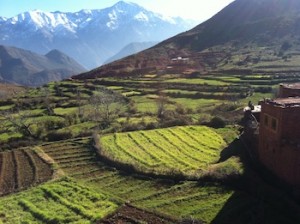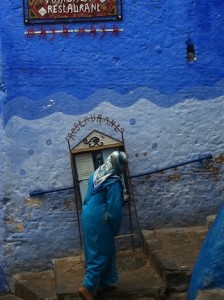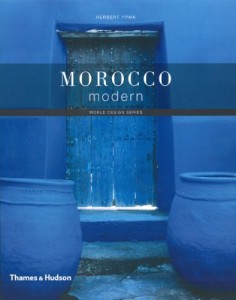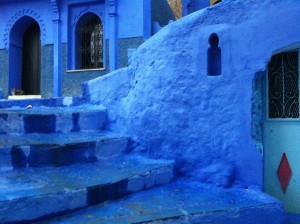Posts Tagged ‘Chefchaouen’
Some of Morocco’s Best Kept Secret Valleys and Seacoast Regions for Hiking are location in the provinces of Essaouira, Azilal, Al Haouz, Ifrane, Ourika and Chefchaouen. With its diversity of geography and landscapes, Morocco offers plenty of opportunities to hike and trek. And…
Chefchaouen, in the Rif Mountains of Morocco’s North, is a popular destination for visitors. Nestling in a valley beneath the “horns” of the mountains to which its name alludes (Ichawen means goat’s horns in the local Berber dialect), Chefchaouen is…
The French designer Yves Saint Laurent remarked of Marrakech that “This city leads me to color.” Morocco has fascinated many designers with its wealth of color and diversity of islamic design for the last century. The color in Morocco’s bright zellij tiles, woodwork, silver jewelry and cedar hand-crafted ceilings blend…
Chefchaouen lies inland from Tangier and Tetouan. Chefchaouen is a unique Moroccan city known for its blue and white washed medina walls that surround it. Filled with old world charm, a walk through Chefchaouen’s blue alleys evokes being in a magical story book, similar to Aladdin and the magic lamp…
Chefchaouen is a small charming relaxed city of about 40,000 inhabitants located in northeastern Morocco close to Tangiers and Tetouan and the Spanish enclave of Ceuta. It can also be reached from Fes. Chefchaouen is unlike any other town in Morocco and has a laid back charm with buildings painted…
Isolated in the Rif Mountains, Chefchaouen is one of Morocco’s hidden treasures. Chefchaouen is situated in the Rif Mountains, just inland from Tangier and Tetouan making it the perfect Rif Mountain holiday adventure. The city was founded in 1471, as a small fortress which still exists to this day, by Moorish exiles from Spain ed by Moulay Ali Ben Moussa Ben Radhed El Alami to fight the Portuguese invasions of northern Morocco. Chefchaouen was known as one of the main concentrations of Moriscos and Jews who sought refuge in this mountainous city after the Spanish Reconquista in medieval times.
Isolated in the Rif Mountains, Chefchaouen is one of Morocco’s great treasures. This small mountain village sweeps you away into a state of calm with its color scheme that embraces every imaginable shade of blue. Bold splashes of cobalt, turquoise, teal, white and starlit blue surround each corner and cobbled…
Slightly out of breath from the long trek up the mountainside you look up ahead and see that it is not too much further. You pass a goat herder who, despite his age, does not seem to be feeling the effects of the climb as much as you are, he…









